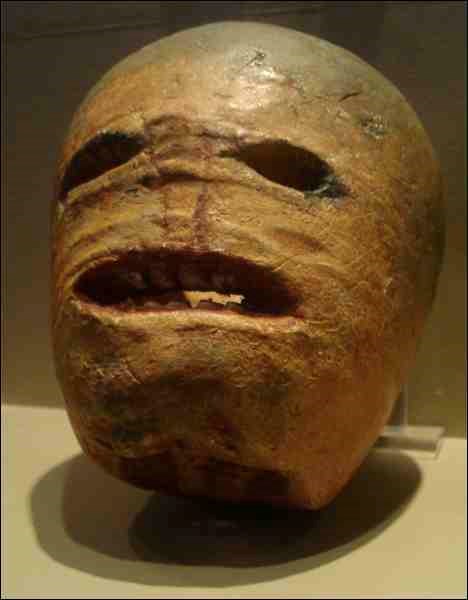On this Halloween, like many before it, our homes will be overrun by children dressed up as witches, vampires, princesses, superheroes or whatever strikes their little fancies. But how can you be sure it is merely pretence? What if some of them aren't pretending and are exactly what they seem? It's difficult to see the danger in a fairy or a three-foot pirate, but a creature of the dark is another story.
I'm not the first to think such things. Or in wondering what I can do to protect my family and my home. Simply turning off the lights, locking the doors and cowering under the covers only invites another kind of mischief involving eggs and t.p.
For general protection, the ancient Celts had it figured out 3000 years ago. They carved scary faces in large beets, gourds and turnips (then later potatoes). The insides were hollowed out to hold a burning coal or small candle to light up the "head." These were placed in windows and near doorways to ward off wicked spirits that wandered the earth on the evening of Oct. 31, the start of their harvest celebration and the end of summer. The pumpkin, because of its size and roughly head-like shape, became the vegetable (it's actually a fruit) of choice when the Irish immigrated to North America.
Another general protective strategy is to plant a mountain ash, hawthorn or elder near your house to keep witches and ghosts out of your hair. Burning rosemary, thyme and juniper together will accomplish the same thing and can substitute for plug-in air fresheners. And hanging fennel over your doorway will prevent witches from casting a spell on you and your home.
If your concern is werewolves, wolfsbane (Aconitum spp.) should help fend them off. You may know it better as monkshood, a shade-loving perennial. It is an extremely toxic plant and poisons were made from it to kill wolves, hence its common name. It can also be an effective deterrent against vampires. Van Helsing, in the classic 1931 Dracula movie, used it to prevent the count from entering Mina's bedroom. But Dracula was smarter than that and tricked the malleable nurse into removing it from the bedroom, allowing him to enter and whisk the hapless Mina away.
Garlic, of course, is the most important protection against vampires. Hanging a stylish garlic bulb necklace around your neck is sure to keep them and your in-laws alike at bay. Roses and hawthorn flowers were also thought to defend against the living dead. In addition, mustard seed sprinkled on your roof was thought to scare them off. If they get past your defences or you want to be proactive, make sure to have a supply of ash, hawthorn or oak stakes at the ready. If you manage to take out a vampire, stuff a garlic bulb in its mouth to keep it from rising again.
Finally, we have vervain (aka verbena). For centuries and in many countries, vervain was regarded as a magical herb. Rubbed against your skin, it was thought to aid in the granting of wishes. It could protect your home against lightning, give a boost to your romantic life or simply used as a good-luck charm when hung around the neck. However, its best use at this time of year is to chase off witches. And some believed that when drunk as a tea (not recommended), it could protect against vampires.
Now all you have to worry about is having enough treats to satisfy the children of the night so no tricks are played on you or worse.
- This column is provided courtesy of the Saskatchewan Perennial Society (www.saskperennial.ca; [email protected]).




